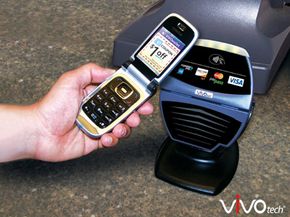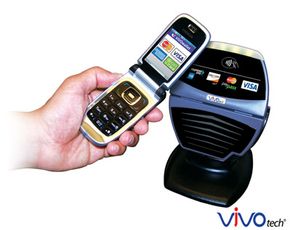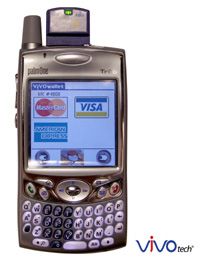You're on your way home with a few errands to run and only your cell phone to help. From work, you walk to the commuter train station, where you touch your cell phone to a near field communication (NFC) reader to pay your fare. On the platform, you stand near a poster advertising a movie you'd like to see. You touch your phone to the NFC tag on the ad to download details about the film, including where and when it'll be playing and the URL for a Web site to visit to order e-tickets.
When you reach your stop, you go to the bookstore, where you use your phone to redeem a discount coupon and buy a DVD. The next stop is the dry cleaners, and again, you touch the phone to the NDC reader to pay your bill.
Advertisement
The last stop is your favorite restaurant for carryout. You sent a text order from your phone, so the food is ready and waiting. Another touch of the phone to a reader, and you're ready to head home for a relaxing dinner and a chance to watch that new DVD.
The cellular electronic payment described in this scenario may seem futuristic, but consider that:
- TheTrainLine, a British train ticket retailer, is piloting a smart-ticketing system that allows riders to link train tickets to NFC-enabled cell phones such as the Nokia 6131. The rider buys tickets online using a mobile phone or PC. At the station, the rider touches the phone to a mobile reader to pay the fare [source: Silicon.com].
- McDonald's Holdings Japan has begun offering a discount coupon program for NFC-enabled cell phone owners, who already use cellular payment for train fares, store purchases and McDonald's meals. With the coupon program, users can receive, select and download coupons, making their purchases 10 times faster. More than 40 million Japanese have NFC-enabled cell phones, which first went on the market there in 2004 [source: RFID Journal].
All of this may have you wondering: How does electronic payment with a cell phone work? How available is this type of payment? And what are the security risks? Keep reading to learn more, starting with the technology behind cellular electronic payments.
Advertisement


